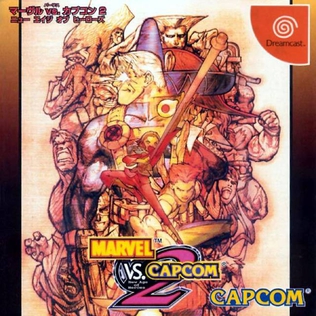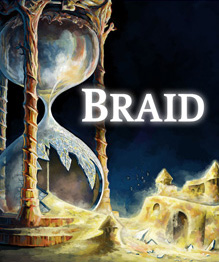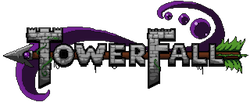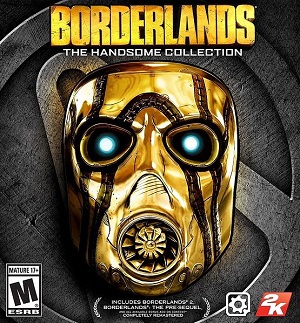
Marvel vs. Capcom is a series of crossover fighting games developed and published by Capcom, featuring characters from their own video game franchises and comic book series published by Marvel Comics. The series originated as coin-operated arcade games, though later releases would be specifically developed for home consoles, handhelds, and personal computers.

Marvel vs. Capcom 2: New Age of Heroes is a crossover fighting game developed and published by Capcom. It is the fourth installment in the Marvel vs. Capcom series, which features characters from both Capcom's video game franchises and comic book series published by Marvel Comics. Originally released in Japanese arcades in 2000, the game received ports to the Dreamcast, PlayStation 2, PlayStation 3, Xbox, Xbox 360, and iOS devices over the span of twelve years.
Super Monkey Ball is a series of arcade platform video games initially developed by Amusement Vision and published by Sega. The series debuted in 2001 with the arcade game Monkey Ball, which was ported to GameCube as Super Monkey Ball later that year. Several sequels and ports have been released.

Braid is a puzzle-platform video game developed by Number None and considered an indie title. The game was originally released in August 2008 for the Xbox 360's Xbox Live Arcade service. Ports were developed and released for Microsoft Windows in April 2009, Mac OS X in May 2009, PlayStation 3 in November 2009, and Linux in December 2010. Jonathan Blow designed the game as a personal critique of contemporary trends in video game development. He self-funded the three-year project, working with webcomic artist David Hellman to develop the artwork. An anniversary version is planned for release for PlayStation 4, PlayStation 5, Xbox One, Xbox Series X/S, Nintendo Switch, Mobile, Windows, Mac, and Linux with updated graphics and developer commentary.

Street Fighter IV is a 2.5D fighting game published by Capcom, who also co-developed the game with Dimps. It was the first original main entry in the series since Street Fighter III in 1997, a hiatus of eleven years.

Super Street Fighter IV is a 2.5D fighting game produced by Capcom. It is an updated version of Street Fighter IV and has been said to mark the definitive end of the Street Fighter IV series. Having been deemed too large an update to be deployed as DLC, the game was made into a standalone title but given a lower price than that of a full retail game. It was released in April 2010 for the PlayStation 3 and Xbox 360. Super Street Fighter IV: 3D Edition was released as one of the launch titles for the Nintendo 3DS, with 3D functionality, on February 26, 2011, in Japan. The game has sold 1.9 million units worldwide, while the 3D Edition for the 3DS has sold an additional 1.1 million units worldwide.

Ultimate Marvel vs. Capcom 3 is a crossover fighting game developed by Capcom in collaboration with Eighting. It is an updated version of Marvel vs. Capcom 3: Fate of Two Worlds. The game features characters from both Capcom's video game franchises and comic book series published by Marvel Comics. The game was released in November 2011 for the PlayStation 3 and Xbox 360, and was featured as a launch title for the PlayStation Vita in 2012. The game was later ported to PlayStation 4 in December 2016, and Windows and Xbox One in March 2017.

Skylanders is a toys-to-life action-adventure video game franchise published by Activision. Skylanders games are played by placing a character's figure on the "Portal of Power", a device that reads its tag using NFC and "imports" them into the game as a playable character.

Super Street Fighter IV: Arcade Edition is an update to Super Street Fighter IV, originally released in 2010 for the arcades. It has been ported in 2011 for Microsoft Windows, PlayStation 3, and Xbox 360 and in 2017, the Xbox 360 version became backward compatible on the Xbox One.

Below is an action-adventure game developed by Capybara Games. The game was announced during Microsoft's E3 2013 press event, and was indefinitely delayed in 2016. It initially released on Microsoft Windows and Xbox One on December 14, 2018, with a PS4 port released in 2020. The game received mixed reviews upon release.

Killer Instinct is a fighting game, the third in the Killer Instinct series, originally developed by Double Helix Games, followed by Iron Galaxy, under supervision of Ken Lobb and Rare, and published by Microsoft Studios, released as a free-to-play launch game for the Xbox One in 2013. The game is a reboot of the series, though some plot elements from Killer Instinct and Killer Instinct 2 have been retained. Development of the game involves individuals with histories in fighting games on both the developmental and competitive sides. It received positive reviews for its mechanics and engine, but was criticized for its initial lack of content. A second season of characters was released between 2014 and 2015. A third season, along with a port of the game for Windows 10, was released in 2016.

TowerFall is an action indie video game created by Maddy Thorson through her company Maddy Makes Games. In the game, players control up to four archers in a multiplayer platform fighter. It was released on the Ouya microconsole in June 2013 and was later ported to PlayStation 4, Xbox One, Linux, OS X, and Windows as TowerFall Ascension and to the Nintendo Switch under its original title of TowerFall.
Dead Rising is a series of action-adventure games created by Keiji Inafune. It was originally developed by Capcom until Capcom Vancouver took over developing the franchise. As of September 30, 2023, the game series has sold 16 million copies worldwide and is currently Capcom's sixth most successful intellectual property.

Borderlands: The Pre-Sequel is an action role-playing first-person shooter video game developed by 2K Australia, with assistance from Gearbox Software and published by 2K. It is the third game in the Borderlands series, and is a spin-off set after 2009's Borderlands and before 2012's Borderlands 2. It was released for Linux, OS X, PlayStation 3, Windows, and Xbox 360 on 14 October 2014. Updated ports for Windows, PlayStation 4 and Xbox One were released as part of Borderlands: The Handsome Collection on 24 March 2015.

Disney Infinity 2.0 is a 2014 toys-to-life action-adventure game published by Disney Interactive Studios. It is the sequel to Disney Infinity (2013) and was announced on April 8, 2014. The game was released on September 23, 2014, in North America, September 19, 2014, in the United Kingdom, September 18, 2014, in Australia and the rest of Europe for iOS, PlayStation 3, PlayStation 4, Wii U, Microsoft Windows, Xbox 360, Xbox One, and PlayStation Vita on May 9, 2015.

Game of Thrones, also known as Game of Thrones: A Telltale Games Series, is an episodic graphic adventure game developed and published by Telltale Games for Android, iOS, Microsoft Windows, OS X, PlayStation 3, PlayStation 4, Xbox 360, and Xbox One. It is based on the television series of the same name.

Life Is Strange is an episodic adventure game developed by Dontnod Entertainment and published by Square Enix. The first installment of the Life Is Strange series, the game was released in five episodes periodically throughout 2015 for PlayStation 3, PlayStation 4, Windows, Xbox 360, and Xbox One. It was ported to OS X and Linux in 2016, and iOS and Android in 2017–2018.

Borderlands: The Handsome Collection is a compilation of first-person shooter video games developed by Gearbox Software and published by 2K. The Handsome Collection consists of both Borderlands 2 (2012) and Borderlands: The Pre-Sequel (2014) for PlayStation 4 and Xbox One, along with all of their accompanying downloadable content, enhanced local multiplayer, and the ability to transfer save data from their respective PlayStation 3 /Vita/PSVR and Xbox 360 versions. A port to the Nintendo Switch entitled Borderlands Legendary Collection was released in North America on May 29, 2020 along with the PlayStation 4 and Xbox One versions, which additionally includes the first Borderlands. For The Handsome Collection, Borderlands 2 was ported by Iron Galaxy Studios and Borderlands: The Pre-Sequel by Armature Studio. The Legendary Collection port was handled by Turn Me Up Games and Behaviour Interactive.

Rare Replay is a 2015 compilation of 30 video games from the 30-year history of developers Rare and its predecessor, Ultimate Play the Game. The emulated games span multiple genres and consoles—from the ZX Spectrum to the Xbox 360—and retain the features and errors of their original releases with minimal edits. The compilation adds cheats to make the older games easier and a Snapshots mode of specific challenges culled from parts of the games. Player progress is rewarded with behind-the-scenes footage and interviews about Rare's major and unreleased games.

Steven Universe: Save the Light is an action-adventure role-playing video game developed by Grumpyface Studios and published by Cartoon Network Games. Based on the television series Steven Universe, it is a sequel to the 2015 mobile game Steven Universe: Attack the Light, and is set before Steven Universe: Unleash the Light. It was released digitally on October 31, 2017 for PlayStation 4, on November 3, 2017 for Xbox One, and on August 13, 2018 for macOS and Windows; and released physically on October 30, 2018 for Nintendo Switch.


















